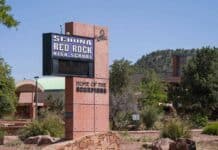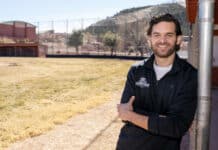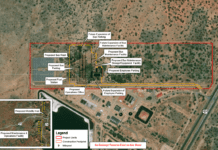The city of Sedona’s first-ever Climate Action Plan is nearing completion and the city seeks input from the public before the Sedona City Council votes on it.
“We started the process at the beginning of the pandemic and we had to navigate safely engaging the community in the plan development,” Sedona Sustainability Coordinator McKenzie Jones said. “We appreciate how responsive and engaged the community has been despite the challenging circumstances. Over 600 community members have provided feedback through surveys and virtual open houses.”
This plan reflects the culmination of a year-long process that included technical assessments, consultation with local experts and key stakeholders and engagement and discussion with the broader community.
According to a city report, the Climate Action Plan is a comprehensive road map that outlines the specific activities that a community will take to reduce greenhouse gas pollution and adapt to climate change. It will consider the projected climate changes in the Verde Valley, Sedona’s greenhouse gas emissions, community vulnerabilities, and the priorities, ideas, and concerns of Sedona residents. The plan will recommend the actions that achieve the greatest emission reductions or improve community resiliency.
The plan will cover five main topic areas: Resilience; buildings and energy; transportation and land use; water and natural systems; and waste and consumption. The report goes on to state that an example of a potential resiliency action is developing a volunteer program to assist community members in implementing Firewise recommendations at their homes. It will build on the work already being done by the city and identify additional opportunities.
Specifically, the plan will:
■ Establish a target to reduce Sedona’s community greenhouse gas emissions.
■ Identify the specific steps that the community will need to take to reduce greenhouse gas emissions.
■ Identify actions to prepare for and adapt to climate changes.
■ Focus on implementation, return on investment, and synergy with other city efforts.
■ Build partnerships with community organizations and institutions.
“There are several ways to reduce emissions and make the community more resilient to extreme weather events,” Jones said. “We want to make sure that the solutions are appropriate for Sedona residents and busi nesses. When community members provide feedback, it lets us know if we are headed in the right direction.
“Throughout the CAP process, Sedona residents have developed actions for the Plan and helped shape the Plan’s language so that it is appropriate for Sedona. This draft Climate Action Plan is a result of an iterative community engagement process. We want to hear from Sedona residents about whether the Plan meets their needs and addresses their concerns.”
From the feedback received so far, Jones said there is a strong consensus that residents are concerned about climate change and that they want the city to take action to
reduce emissions and improve community resiliency. There is substantial support for expanding transit service, access to renewable energy, and bicycle and pedestrian infrastructure.
Looking toward the future
By majority consensus, council agreed on Jan. 13 with the recommended target to reduce 50% of community greenhouse gas emissions by 2030.
“We’ve heard repeatedly from the community since I started back in 2018 what a priority this is for them,” Jones said during that meeting. “Climate change poses risks from everything from our health and infrastructure to our local ecosystems.
“I know it seems like climate change is this enormous problem across the world and what is Sedona going to be able to do about it? In addition to doing our part, everything we propose in the plan also has great local benefits for us.”
In order to try and reach the goal set by council, along with it comes a price. Jones said regardless if the goal is 50% or even 100% carbon neutrality, which is the elimination of carbon dioxide into the atmosphere, it will take additional staffing within her one-person department.
“If we built out the program to a fuller size and also started providing more community programs, and even if we’re trying to achieve carbon neutrality, we’re probably not at more than $1 million a year,” Jones said. “It’s still significant but it’s not something like $10 million. So when you’re thinking about the scale of it, a very large program for us would probably be about $1 million.”
In terms of setting a goal for 2030 as opposed to 2050 as some cities have, Jones said, “I think it’s easy to push things off when it’s 2050. To get to a 2030 target means we start now — like tomorrow.”
To participate, visit sedona.konveio.com and select “Sedona Climate Action Plan Overview.” There are two options for commenting:
■ The comment form for longer, general comments.
■ Specific comments on the draft, titled Strategies and Actions.
Mayor Sandy Moriarty pointed out in January that any target goal, whether it’s 50% or more, is just that, a target.
“It’s not set in concrete,” she said. “And to think that we’re ever going to hit some target is probably unrealistic. However, I will say that when you look at other cities [that have loftier targets], I think you have to keep in mind that when they set their targets, they did it three or four years earlier than us. I’d like to do what Tom [Councilman Tom Lamkin] said and that’s to set a closer target and see how we do with that.”






















